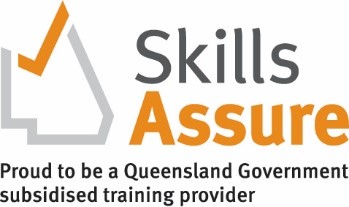Queensland’s Leading Training Provider
So, you’ve decided to begin studying! Whether this is your first or next pathway, ASH is here to help you succeed.
We understand how difficult it may be to choose a vocational training provider in Queesland, so we’ve highlighted some of the features that set us apart from the competition. We’ve whittled it down to four main factors: cost, training location, delivery mode, and our trainers. Continue reading to see why ASH may be the best option for you.
Cost
We are proud to be an approved Skill Assure Funding Provider, meaning we’ve been approved by the Queensland Government to provide training and assessment services under the Certificate 3 Guarantee, Higher Level Skills, and User Choice Programs. All supported qualifications have eligibility requirements that each student must satisfy. These qualifications include our business courses, aged care and disability courses, childcare courses, telecommunication courses and community services courses.
This means that our students are not left with debt when they graduate.
Training Locations
Ashley Institute of Training has study locations right across Queensland that allows students every opportunity to enrol in a qualification. Our campus locations are: Salisbury (Head Office), Logan, Ipswich, and North Lakes.
We also deliver training in Brisbane CBD, Maroochydore, Inala, and Southport.
This flexibility allows students to choose from one of our study locations across Queensland and, in many cases, helps students, particularly regional students, to save money on travel and accommodation.
Mode of Delivery
There are a few things that set us apart when it comes to delivery.
Our students benefit from individualised help and 1:1 attention in the classroom, as well as additional tutoring outside of the classroom, thanks to our small class numbers (15-20 people each class).
In addition to smaller class sizes, and additional help, we offer a range of delivery options including face-to-face at one of our above-mentioned campus locations, blended delivery whereby students complete aspects of their training both virtually and in-person, and lastly, a fully online training package, like our Certificate III in Business (BSB30120) qualification.
Our Trainers
All our trainers have industry experience, which means they’ve worked in the field they’re teaching. This allows them to share firsthand knowledge and anecdotes with their students. These anecdotes assist many of our students in comprehending the courseware and then applying it to the real world.
Over the years, our trainers and wider team have developed a multitude of industry relationships, allowing us to provide specialised excursions and guest speakers, both of which our students adore. Furthermore, our industry connections enable us to assist students in obtaining placement opportunities with industry leaders. Our students are then able to participate in placement at a pre-arranged facility and fully utilise the opportunity as placement hosts trust the quality of students coming into their facility. Unsurprisingly, many of our students make such a positive impression during their placement that they are offered jobs at the facility.
In addition to these factors, many of our 5-star reviews emphasise our trainers’ great quality, which we completely agree with!
“‘I started my Certificate III in Individual Support in March and had the best trainer. Marinda was an amazing teacher and she was nothing but helpful and so knowledgeable. She encouraged me through my course to be the best I possibly could be. After completing the placement, I was encouraged to apply for a job there and ended up getting the job. I honestly believe I wouldn’t have got this opportunity if it wasn’t for my trainer and Ashley Institute of Training itself. Thank you for everything you guys have done for me.'”
Karla achieved her CHC33015 Certificate III in Individual Support (Ageing, Home & Community) with us in October 2021.
Finally, we recognise that we are just one education provider among many in Queesland; nonetheless, we are confident that we satisfy the needs of our students, provide high-quality training, and ensure that students are job-ready when they complete their course.
Everyone will have various needs when it comes to choosing a vocational training provider, so it is important that they research and find a provider that suits them.
To find out more about ASH, and how we can assist you on your training journey, you can contact us on 1300 274 539 or email us at info@ash.com.au.
We can’t wait to host you on campus soon!

 1300 274 539
1300 274 539

